When we chose to use wood heat on a daily basis to augment our fuel-oil boiler in 2005 (see our heating bio here), we committed to a huge boost in the amount of wood we needed each year. Being frugal and healthy, we chose to go hunt that wood down in the wild and wrassle it home on our own rather than buy it.
It was in a dream one night that this work got its current label. In my dream I was in the field in a new place doing some sort of field biology when I ran across my dad on the side of a dirt road with some other guys.
I was surprised to see him there, and I asked “What are you guys doing?”
“Hauling logs in from the Boombah,” he said.
That’s almost all I remembered from that dream, but it had a certain ring to it given one of my ongoing activities in the real world. And so it stuck. We spend a fair amount of time hauling logs in from the Boombah.
The ways in which we get firewood have changed a lot through the years. When we began, you could still go out into the state forest and cut firewood from “decks” of felled trees stacked by the side of the road but not useful for logging companies. When we’d pick up our firewood permit, the folks there would helpfully point out where you could find these piles. It was of course too good to last. As wood burning became more common, these piles were soon gone, and the geography of where the permits allowed you to cut changed quite a bit, too, eventually becoming quite focused.
It was a fair drive out there, so we would haul back loads as big as we could get. I built a box for the pickup bed that was easy to set up and dismantle. Our chain saw was not a particularly good one in those early years, and it could go into complaining mode and not work smoothly at times. So I’d cut four-foot lengths if we could haul the pieces, because this approach would just about cut the sawing in half (so to speak). Rose took to calling the bigger ones that only I could move “monsteros.” Oh, and each log is a “heat candy.”
At first, my favorite temperature to cut wood in was zero degrees. That seemed just perfect, with the work keeping us loose and warm. Once the decks were gone, though, punching through the snow hauling logs was more work, and we gradually switched to fall and spring. We had a couple of accidents before we made that switch, though. We were still getting wood from decks, and one log was frozen to the ground. I was pretty sure I could get it loose, so I threw a chunk of firewood at its end to shock it free. Instead, it very springily bounced the log right back at me, and my missile came back hard and jammed my index finger pretty badly. That one took a long time to heal.
The other accident occurred when we too vigorously loaded the pickup and sent a log through the back window. We had a board up to protect the glass, but it didn’t quite cover the whole thing. That gap proved to be a log magnet. I was so grumpy about how much they were going to charge to replace that damned window that I drove around with it out all winter. (For those of you who don’t know this already, guys can be kind of stupid this way sometimes.)
One winter when we had a long cold spell, I got cabin fever and took the saw up the hill from the house and began cutting downed trees there. It was about -30 F, and it was good to get out and do something. We hauled four-foot lengths out of the woods on sleds. This was the first aspen we’d cut. Spruce and birch are better, yielding more BTUs per pound. But free wood near the house that you can poke away at in your leisure time is a nice thing. As the mortality rate of the trees near the house has increased, we’ve gotten more and more of our wood from this closer Boombah. Being road-free, though, wood from this source requires more elbow grease to get it to the wood shed.
I’ve taken now to dicing up fresh treefalls (and the freshly dead) and stacking them in the woods for a year to dry out in place before hauling them. They’re noticeably lighter, and while it’s a bit of a pain to have a lot of 16-inch pieces to move, a second season under a tarp is enough to make them very dry and ready to burn. So we’re now burning a mix of spruce, birch, and aspen, with a gradually increasing proportion of the latter. Somewhere along the way we also upgraded the chainsaw, so saving on cuts while out in the woods is no longer very important.
A cord of wood weighs around two tons, and we burn about three cords a winter. This past year I didn’t need to saddle up the truck at all—we had enough in the backyard Boombah for more than a winter. I pecked away at hauling it all summer and fall, putting a load at a time on my shoulders or back and hoofing it out of the woods. I didn’t realize until now that it was over 12,000 pounds of wood. It felt therapeutic at the time. We might try sleds again. It’s an ongoing saga.

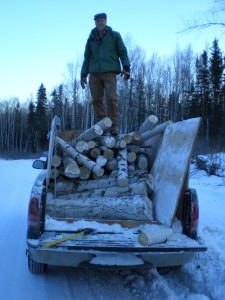
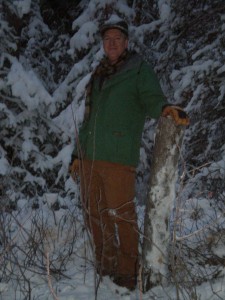
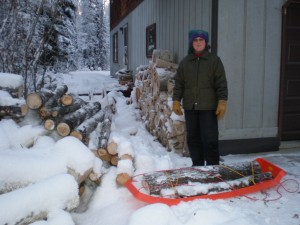
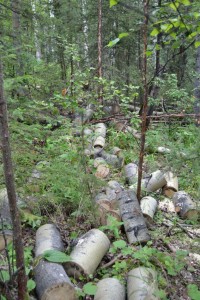
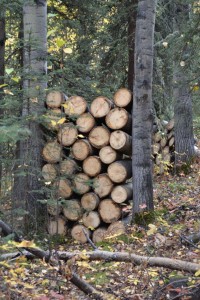
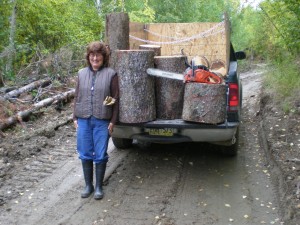
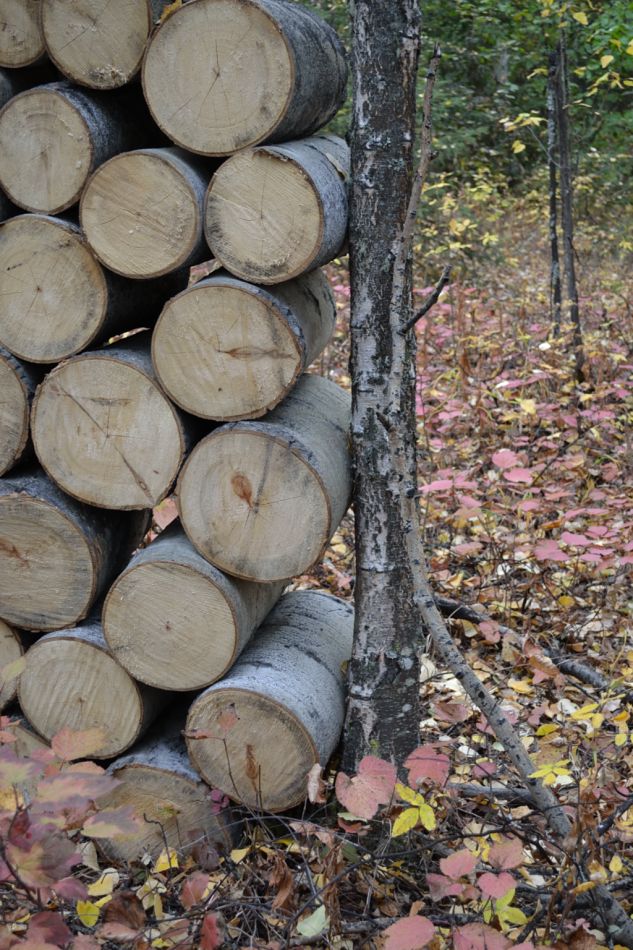
That is an amazing amount of work!
Good for you and Rose.
We pick up the phone and get it delivered to the deck.
As always, your photos are gorgeous!
It is a fair amount of work. We could get deliveries, but it’s still enjoyable to get out and get it.